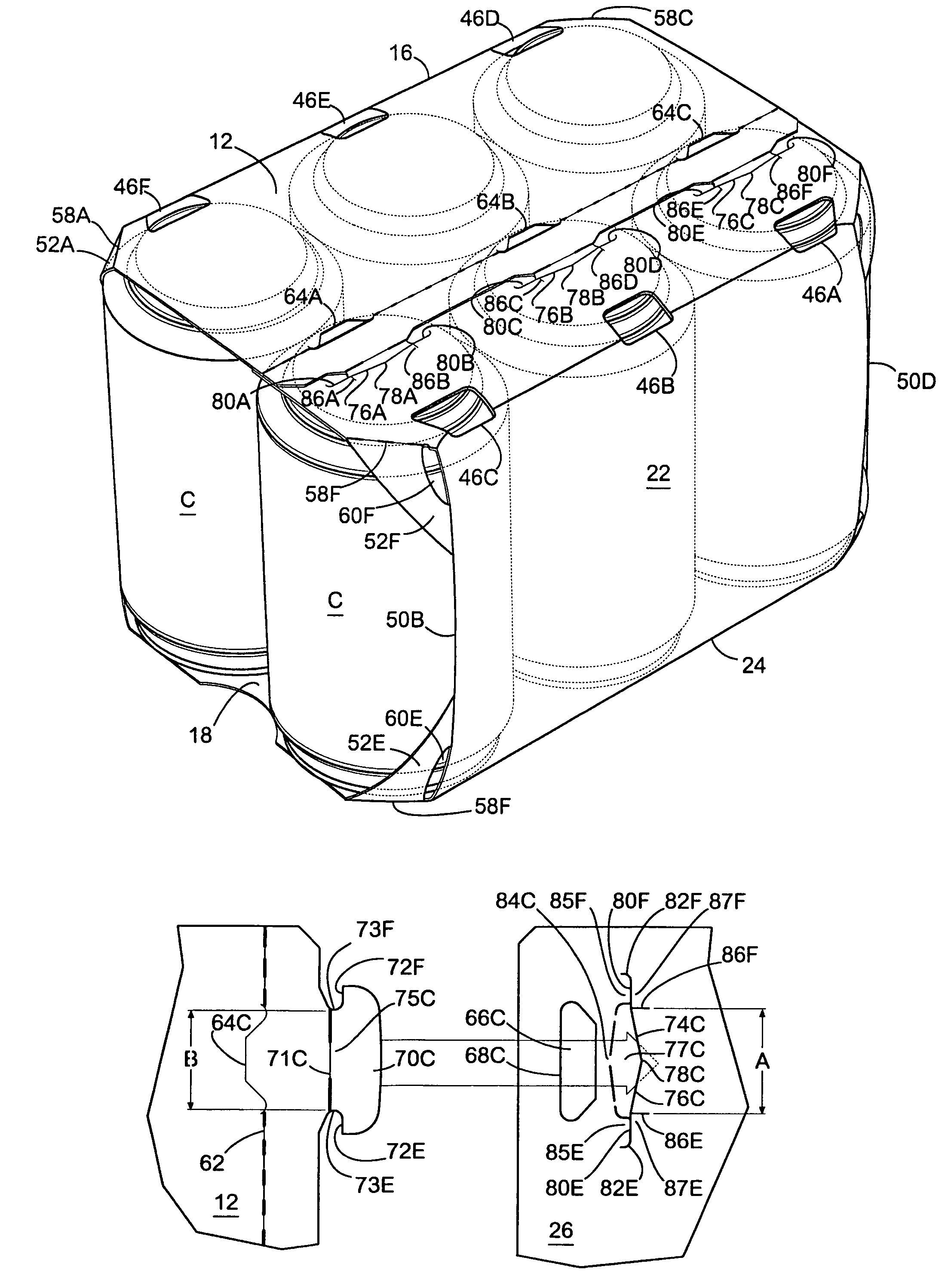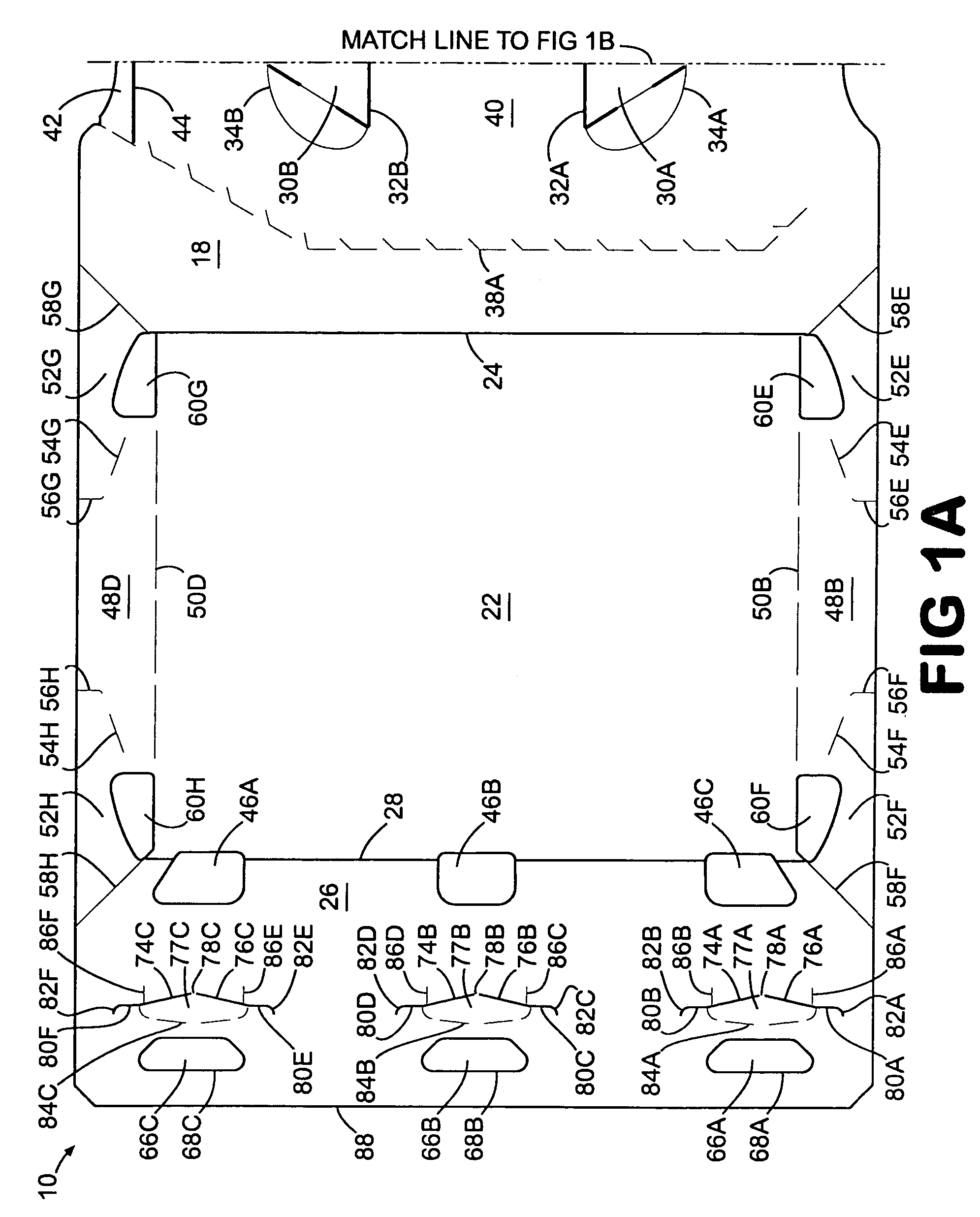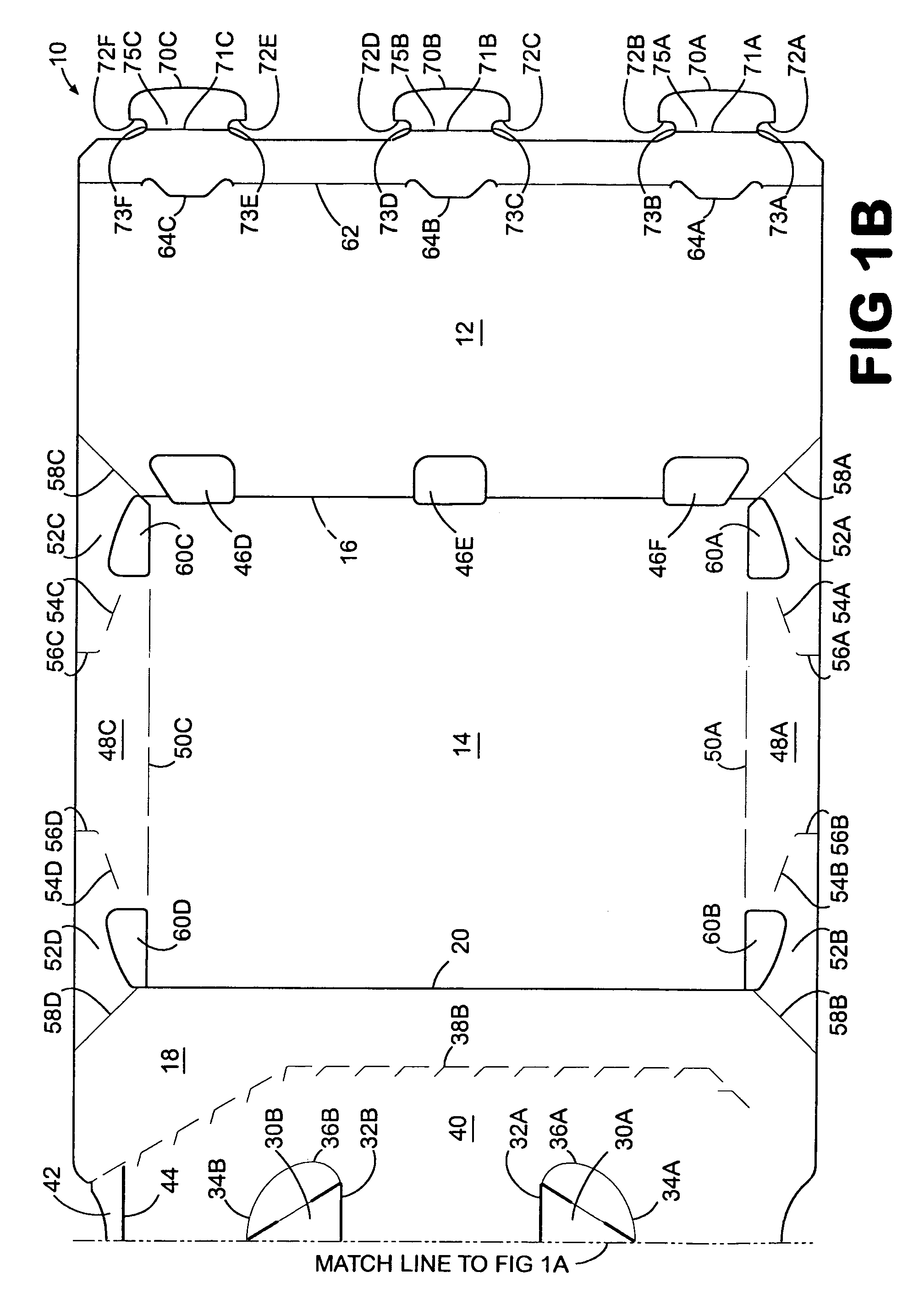Flat primary and secondary locking system
a locking system and flat bottom technology, applied in the field of carriers, can solve the problems of frequent interference of container bottom flatness with the locking system, and achieve the effect of improving the stability of the container bottom
- Summary
- Abstract
- Description
- Claims
- Application Information
AI Technical Summary
Benefits of technology
Problems solved by technology
Method used
Image
Examples
Embodiment Construction
[0020]The present invention is primary for use with cans, bottles or tubs used to contain food or drink. The present invention is especially useful in wrapping containers that have a flat bottom.
[0021]As illustrated in FIG. 1, the blank 10 for forming one embodiment of this invention is formed from a foldable sheet of material, such as paperboard. The blank 10 for forming the carrier of this invention has an outer flap 12 that is attached to a side panel 14 by fold line 16 and in turn attached to top panel 18 by fold line 20. Top panel 18 is attached to opposite side panel 22 by fold line 24 and in turn attached to inner flap 26 by fold line 28.
[0022]Finger flaps 30A–B may be provided by cut lines 36A–B and fold lines 32A–B, which when opened provide finger apertures 36A–B for carrying the carrier. A dispenser flap 40 is formed in the top panel 18 by tear lines 38A–B. A starting tab 42 which is attached to dispensing flap 40 by fold line 44 may be provided to start the removal of th...
PUM
| Property | Measurement | Unit |
|---|---|---|
| distance | aaaaa | aaaaa |
| width | aaaaa | aaaaa |
| sizes | aaaaa | aaaaa |
Abstract
Description
Claims
Application Information
 Login to View More
Login to View More - R&D
- Intellectual Property
- Life Sciences
- Materials
- Tech Scout
- Unparalleled Data Quality
- Higher Quality Content
- 60% Fewer Hallucinations
Browse by: Latest US Patents, China's latest patents, Technical Efficacy Thesaurus, Application Domain, Technology Topic, Popular Technical Reports.
© 2025 PatSnap. All rights reserved.Legal|Privacy policy|Modern Slavery Act Transparency Statement|Sitemap|About US| Contact US: help@patsnap.com



